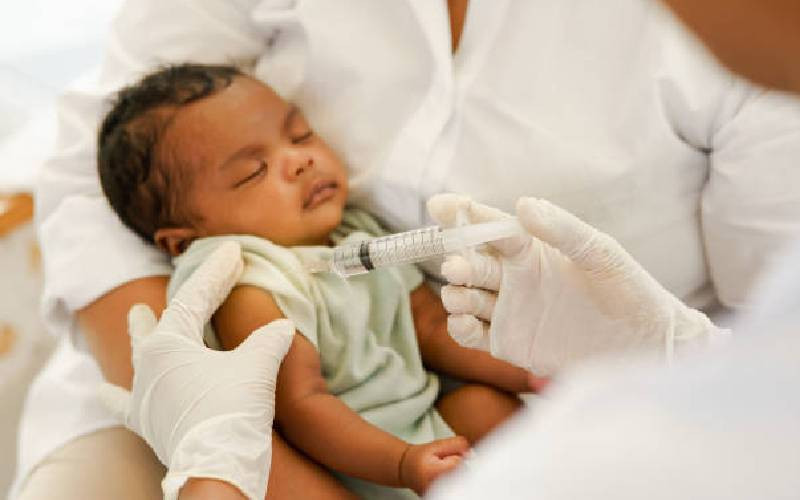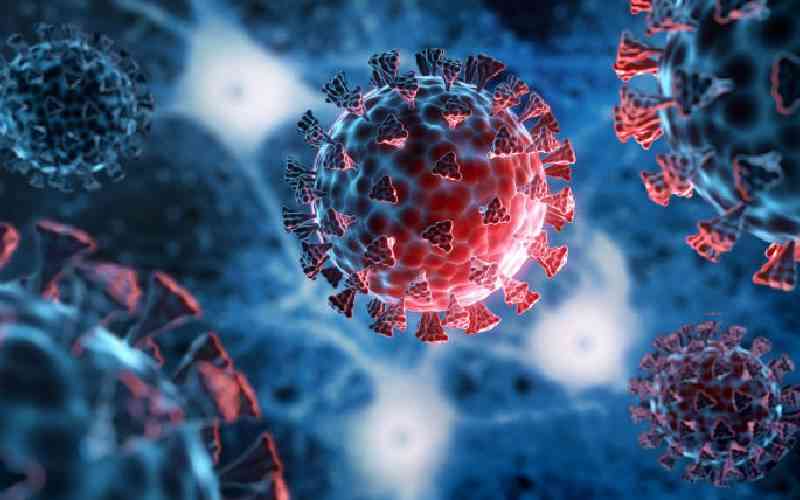Health workers in the county are among 580 persons infected by Chikungunya virus thereby hampering treatment and management of the mosquito-borne disease.
County Health Director Abdi Maalim Isaac told The Standard that about half of the health workers in Mandera County have been infected by Chikungunya and were undergoing supportive therapy.
“At the Mandera Referral Hospital, 40 nurses, four doctors, 13 clinical officers and 23 support staff are affected and are currently under medication as we roll out other control measures to keep the mosquitoes away to reduce the transmission rates,” said Dr Maalim in an exclusive interview.
Maalim said that the total number of affected health workers was yet to be compiled from other health facilities in Mandera County.
He added that cross-border meetings with health officials from Somalia had been done to ensure that the disease was managed by both countries.
Centre for Virus Research acting director at Kemri Rosemary Sang said the intense transmission in the hospitals where the patients are admitted had also affected health workers.
“The mosquito does not choose between a health workers and the next person thus there are some health experts infected with Chikungunya... The risk of infection is higher in hospitals because people are converging in the hospital for treatment thus concentrating the virus in one location,” Dr Sang.
However, she was optimistic that prevention and effective control by spraying the hospital grounds and patients sleeping in mosquito nets during both day and night would manage further spread of the disease.
A team from the Ministry of Health and partners are scheduled to travel to Mandera tomorrow for a meeting with county health officials on more effective ways of managing the twin outbreaks off cholera and chikungunya.
A team of eight entomological technicians are expected to lead the control of Chikungunya by spraying their breeding sites with insecticides, providing insect repellants and ensuring that patients sleep under treated mosquito nets.
Chikungunya is spread through the bite of an infected aedes mosquito which has a unique daytime biting ability.
To scale up the efforts to prevent further spread of the twin public health outbreaks in northern Kenya, the Ministry of Health is deliberating on recalling the volunteer health workers who had earlier been deployed to Sierra Leone to fight Ebola.
On Tuesday, Cabinet Health Secretary Cleopa Mailu chaired a meeting looking at ways to curb further spread of the two diseases in northern Kenya and in neighbouring Somalia.
“We need to know what the gaps are in order for us to know how to fill them in and address this situation. Kenya shares an expansive border with the two countries and there is need for us to coordinate our efforts,” Dr Mailu said at the meeting.
A proposal has also been put forward to request security for the Kenya health teams that will help in the management of the diseases in bordering Gedo town in Somalia.
Stay informed. Subscribe to our newsletter
At the meeting, Kenya Red Cross Secretary General Abbas Gullet cited the importance of extending the control of the two diseases to Somalia’s Gedo given its proximity from Mandera town, but expressed concerns on insecurity in the area.
“There is weak intervention because of insecurity and we need security on that side so that we can get involved,” he said.
According to the World Health Organisation, control of Chikungunya is based on reducing the number of natural and artificial water-filled container habitats that support breeding of the mosquitoes.
Laboratory tests conducted at Kenya Medical Research Institute first confirmed Chikungunya on May 16 after the initial 10 samples collected in Mandera County all tested positive.
The last Chikungunya outbreak in Kenya was in 2004 and 2005 in Lamu, Mombasa and Kilifi though most of the outbreaks have occurred in Africa, Asia, and Europe causing more than three million infections worldwide.
The name “Chikungunya” is derived from a word in the Kimakonde language of Tanzania meaning “to become contorted”, and describes the stooped appearance of sufferers with joint pain which is a characteristic symptom of the disease.
Health experts are yet to understand why the disease aggressively affects the joints though a premise has been put forward that this way, it evades the immune system.
 The Standard Group Plc is a
multi-media organization with investments in media platforms spanning newspaper
print operations, television, radio broadcasting, digital and online services. The
Standard Group is recognized as a leading multi-media house in Kenya with a key
influence in matters of national and international interest.
The Standard Group Plc is a
multi-media organization with investments in media platforms spanning newspaper
print operations, television, radio broadcasting, digital and online services. The
Standard Group is recognized as a leading multi-media house in Kenya with a key
influence in matters of national and international interest.
 The Standard Group Plc is a
multi-media organization with investments in media platforms spanning newspaper
print operations, television, radio broadcasting, digital and online services. The
Standard Group is recognized as a leading multi-media house in Kenya with a key
influence in matters of national and international interest.
The Standard Group Plc is a
multi-media organization with investments in media platforms spanning newspaper
print operations, television, radio broadcasting, digital and online services. The
Standard Group is recognized as a leading multi-media house in Kenya with a key
influence in matters of national and international interest.









